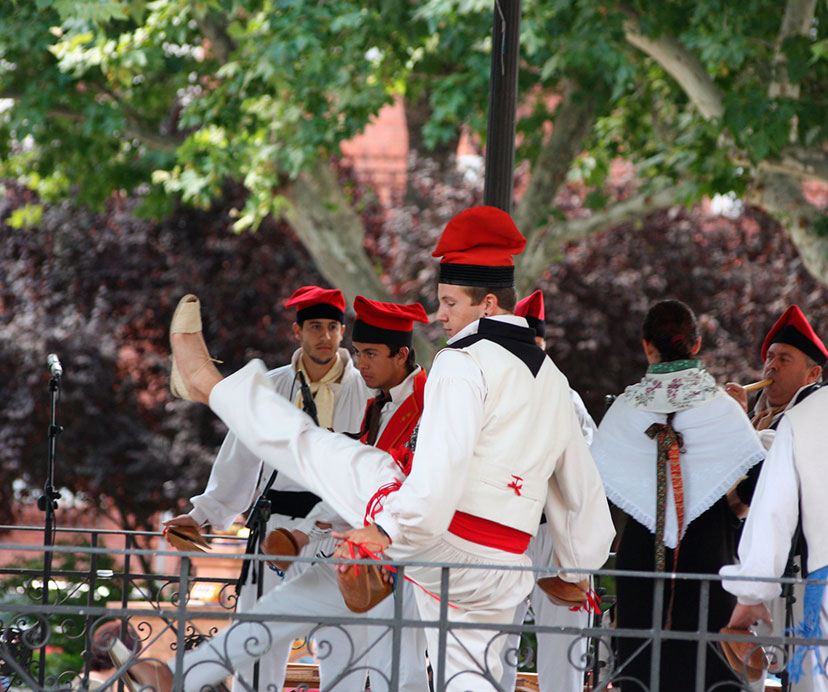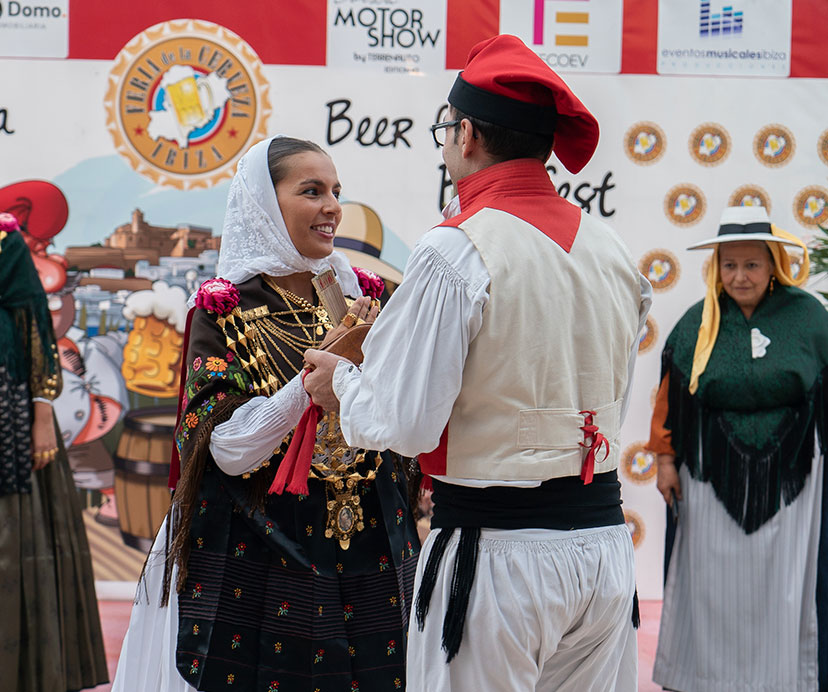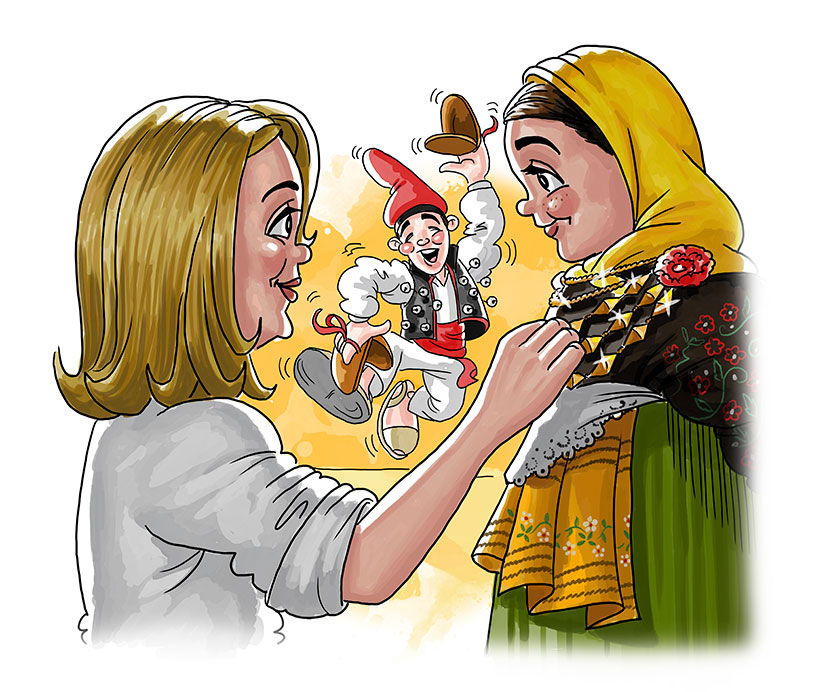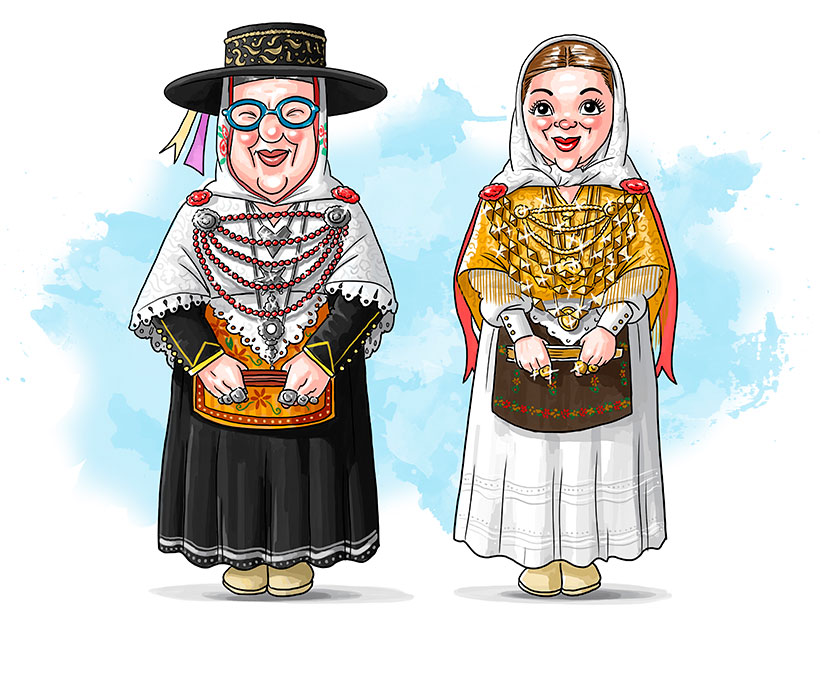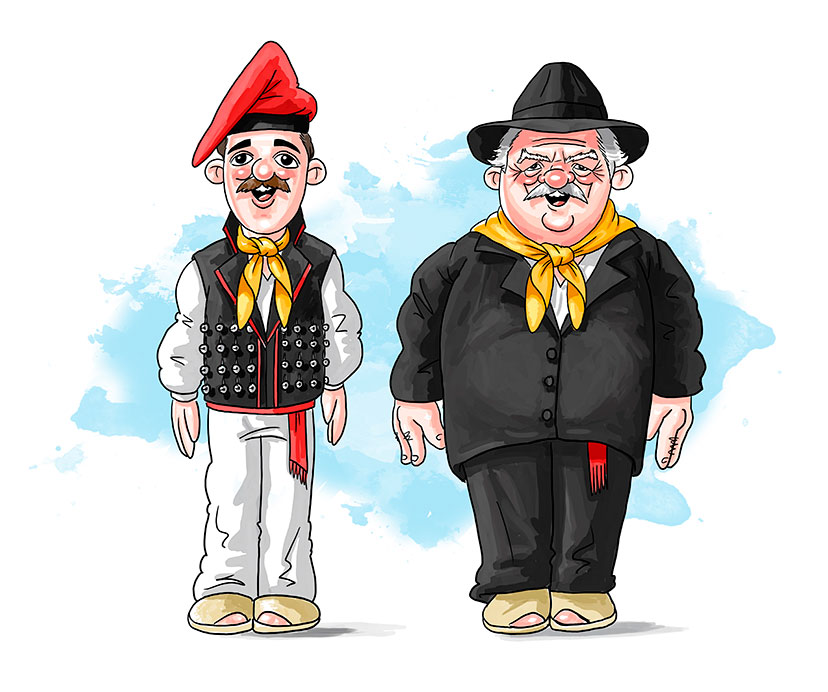Adlib Moda Ibiza was inspired by the petticoats and underwear of the typical Ibizan costume, which it keeps alive today in the lace that decorates its dresses, its colours and its jewellery. It is still possible to see older couples wearing the typical Ibizan costume on a daily basis, while all the local fiestas pay tribute to the island’s folklore with “ball pagès” performances in which dancers and musicians show their skills dressed in their finest gowns. But what does the typical Ibiza costume consist of?
The women have three different outfits, one for parties, one for brides and one for work. Over time, and depending on the place, they have undergone variations that make them even more beautiful. The gonella costume is the oldest. It consists of a petticoat and a black wool jacket, accompanied by a long, hand-embroidered apron, along with a silk shawl and a straw hat. When the women were single, the number of ribbons hanging from their hats denoted the number of suitors they had.
The festive dress is white and is made up of various petticoats. There are women who wore up to twenty different ones, each one with its details, its lace and its unique features. It also includes a jacket embroidered with silver or gold buttons, an apron and a lace headscarf. All this is combined with a brightly coloured silk shawl completed with a striking jewel called emprendada. This necklace consists of various parts that are made up according to the wealth of each family. In the past, it represented the dowry given to new couples. Originally, they were made of silver, coral and mother-of-pearl, but the most modern are made of gold. The Ibizan emprendada has several different parts: the central part, which has a jewel with an image of a virgin or a saint, accompanied by up to seven semi-necklaces and two oval beaded necklaces. On festive days, the country women also wear Ibizan rings, which the fiancés used to give them as an engagement gift, of which there are up to 24 different ones with personalised motifs.
The coloured costume is a modern variation of the above, made with coloured fabrics. The ribbon of the woman’s dress indicated her marital status, being pink for single women, green for engaged women, blue for married women and black for widows. This costume is the most common nowadays and the colour combinations are unlimited.
Finally, there is also the work costume, made with simpler fabrics, for greater ease of movement. The basic features are a white hat, an embroidered black waistcoat and an ankle-length apron.
On the other hand, on feast days, men wore a suit consisting of white trousers and shirt, a neckerchief, a black waistcoat with silver buttons and a red or black waistband, accompanied by a red or black beret or a straw hat. Another costume, the winter one, consisted of black worsted trousers pleated at the top, wide at the thighs and narrow at the ankles. Women and men combined these typical costumes with esparto espadrilles.
These designs have evolved and may vary from one place to another, but a country fiesta is a guaranteed display of colour and is sure to enthral you with its exuberance and gaiety.
